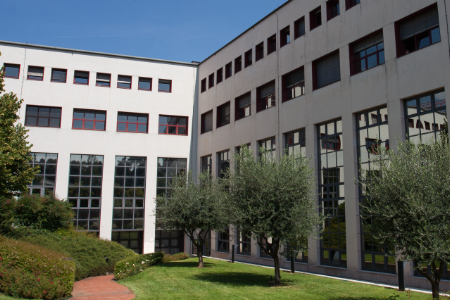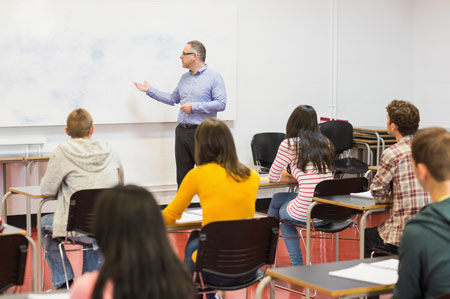Learning outcomes
---------------------------------------
EDUCATIONAL WORKSHOP
---------------------------------------
GROUP 1:
During the educational workshop, we will explore operationally and methodologically the theme of the analysis of landscapes and of the heritage (natural and cultural) in them located. Practical exercises are foreseen, which will get students active. The goal of the exercise is to see HOW to make the analysis of landscapes and of the heritage that it contains (this functionally to activities to be carried out in the classroom or out of it with the pupil).
GROUP 2 and 3:
During the educational workshop, we will learn how to:
• plan, manage, evaluate geographic education paths according to a systemic model
• identify ways of activating synergies with local extracurricular agencies
• link knowledge with skills for planning / carrying out educational activities
• examine the different cultural paradigms that underlie one’s ideas of the urban environment and of sustainability
• be able to build communities of practice and dialogue with colleagues
• problematize the real and one's own visions of the world
• think via relationships by activating metacognitive reflection and knowledge-building skills
• be able to confront constructively with the visions of others
---------------------------------------------
FRONTAL LECTURES ("lezione")
---------------------------------------------
Considering the need of kindergarten and primary school children to develop skills and abilities specific to Geography, we will first discuss its foundations, paradigms, concepts and methods, key topics (from an evolutionary perspective). On the basis of age and adopting a multiscalar / transcalar approach, effective teaching allows children to develop attention to the surrounding world. This is crucial in order to raise their awareness and translate the experience into spatial and territorial knowledge. We aim, therefore, to teach students how to set up a teaching method for children to develop an acute - and critical - ability to observe natural and human settings (a capacity both direct and mediated by tools used to enrich contents). Providing appropriate indications, we will insist on the need for future teachers to continuously update their knowledge base adopting a (theoretical, applied, and experiential) lifelong learning approach.
The course is divided into two parts (A and B).
Syllabus
---------------------------------------
EDUCATIONAL WORKSHOP
---------------------------------------
GROUP 1:
- PART 1 (theoretical-methodological premise):
1. After a few introductory remarks on the concept of LANDSCAPE, we will discuss how to analyze geographically a landscape (underlining that there are indeed many ways of examining it)
2. Later, we will make reference to the tools for indirect observation
3. Then, we will choose some and use them for training purposes. One tool, in particular, will allow us to start reading a landscape: the map. With this in mind, we will clearly highlight how to proceed methodologically to the reading of a landscape using a "map" (in particular topographic - one of the ways to represent the landscape): in doing so we will identify operational steps
- PART 2 (practical exercise):
1. We will start using a topographic map of sections of the Veneto area to read examples of landscapes (alternating natural and anthropic elements, having different shapes and forms)
2. With reference to the latter - and also using tools complementary to the map (the web, web apps, virtual globes, satellite images, available datasets, photos, etc.) - we will identify geographical elements and heritage sites (especially cultural - e.g. historic houses, religious heritage, etc.). The latter, in particular, are geo-signs that have contributed to shaping the landscape. They can help us to interpret it.
GROUP 2 and 3:
The program will investigate the issue of URBAN SUSTAINABILITY and will be divided into two phases:
a] 1st phase: 4 hours for each group (3X4h = 12h)
b] 2nd phase : 4 hours for each group (3X4h = 12h)
- THE SUSTAINABLE CITY / Topic "Urban sustainability":
1. Problem identification: recognition of pre-understandings relating to the theme "urban sustainability" (individual work). Starting from those concepts that often fall within the cognitive matrix of common sense: "city" and "sustainability"
2. Once the themes considered relevant and characteristic of urban sustainability have been identified, the aim is to create a conceptual scheme of the topics shared and co-constructed with the small group
3. Identification of a topic deemed relevant by the group on which to carry out a shared reflection/research in the light of: the knowledge learned during the geography lessons; the 2012 National Indications; the New 2018 Scenarios and the internship experience carried out
4. Hypothesize a didactic path and/or a game to be proposed to the kindergarten and/or primary school on the identified topic; one that takes into account the reflections that emerged and the knowledge learned
5. Presentation of the games made and the educational path followed by the boys and girls of the Municipal Council of the Boys coordinated by the Lecturer in recent years ("Eco game" - a game of the goose on sustainability; "Ecopolis" - a game to create the sustainable city)
- THE SUSTAINABLE CITY / Topic "An aspect of the sustainable city: participatory planning":
1. Case study: the participatory planning of an urban area
2. Presentation of the case: an area without intended use in the first suburbs of a small city
3. Analysis of the photographs, orthophotopiano, and planimetry of the area in question
4. Role-playing: how participatory planning brings complex needs and problems into play
5. Analysis of the material and solutions produced by the Municipal Council of Children in the redevelopment process of an urban area
6. Debriefing: a shared moment of reflection on the issues addressed, on the outstanding issues and on further research areas
---------------------------------------------
FRONTAL LECTURES ("lezione")
---------------------------------------------
- Part A:
• An Introduction:
1. A definition of Geography
2. Human Geography and Physical Geography
3. The branches of Geography
• Key concepts in Geography:
1. Time, space, site, place, territory, scale, landscape, region
2. Spatial diffusion/distribution/variation/correlation/interaction
(all key terms that inform the language of Geography and define the geographical imagination as well as analysis)
• The tools of Geography:
1. Qualitative and quantitative data (analysis)
2. An introduction to traditional cartography and to GIS (geographical information systems)
• Nature-Culture dualism (from an evolutionary perspective)
• The ecosystems and society - environment interactions
1. An introduction to the causes and consequences of human-induced environmental degradation concentrated in regions and places distributed throughout the planet
• Populations and migrations
• Cultural Geography in relation to the phenomenon of globalization
• Geography and Development
• Geography and Agriculture
• Key concepts (and phenomena) of Industrial Geography, Transport Geography, and the Geography of the tertiary sector
• Key concepts and trends of tourism
• Key concepts of Urban Geography (useful to interpret the urban landscape in its elements, relations, and changes)
• Key concepts of Political Geography
- Part B:
• Geography tools and resources: their use for teaching purposes
• The planning of:
1. an educational guided visit
2. a geographic itinerary (according to age) - Continuing education and professional training
• The development of a geographical curriculum of basic education
• Main criteria to choose a textbook
In the educational workshop, individual or group activities will be proposed in order to translate the program into practice (f.i.: exercises on images and cartographies as well as interactive games and dedicated software).
- Planned learning activities and teaching methods (for both modules):
• Frontal lectures
NB: we will use case studies and internet for demonstration purposes. In order to raise students’ awareness of the existing resources, we will make use of the material available in the University Libraries and in the website of the Italian Geography Teachers Association (AIIG)
• Seminars on selected themes may be organized [experts - researchers and/or practitioners – may be invited to give seminars on specific topics]
Assessment methods and criteria
---------------------------------------
EDUCATIONAL WORKSHOP
---------------------------------------
GROUP 1:
1. Teamwork
2. Oral presentations of the results, to the lecturer and the class (by means of supports created by the students - e.g.: PowerPoint)
GROUP 2 and 3:
Group presentation of the scheme using slides (PDF or PPT).
------------------------
FRONTAL LECTURES ("lezione")
------------------------
- Written exam: open questions and multiple choices (equal to the attendees and not)
- The final exam aims to assess:
1. the knowledge of the topics
2. the capacity and exhaustiveness of the geographical discourse
3. the capacity to link the geographical knowledge acquired with the one developed in other disciplinary domains
4. the capacity of transforming knowledge into abilities.
NB: Students who do not pass the exam can participate in the following one. Registration to the exam is mandatory according to the official procedures of the faculty.







